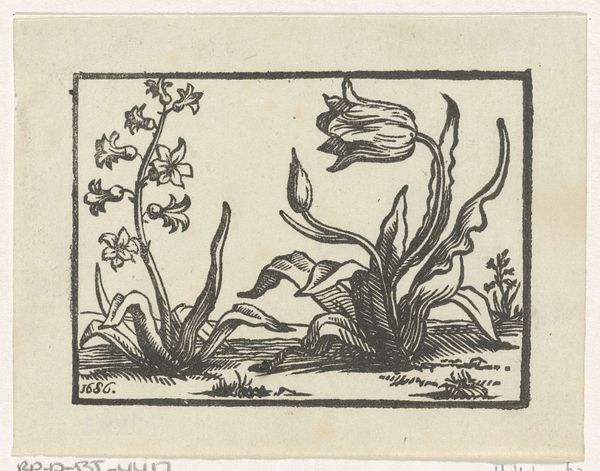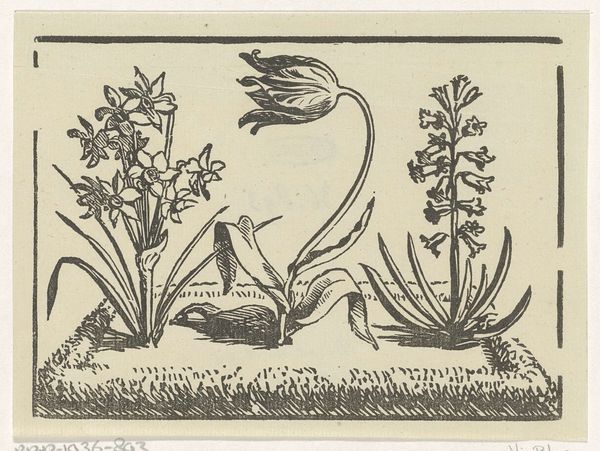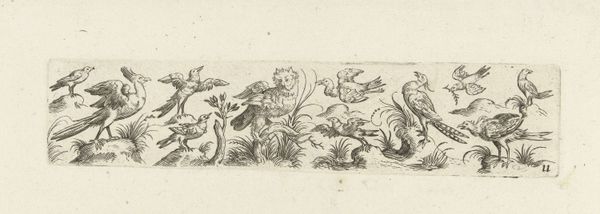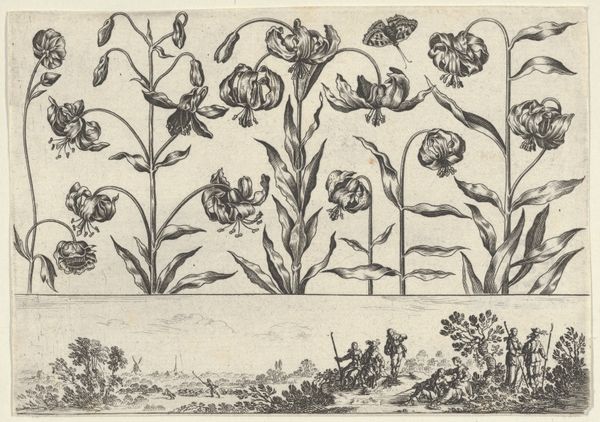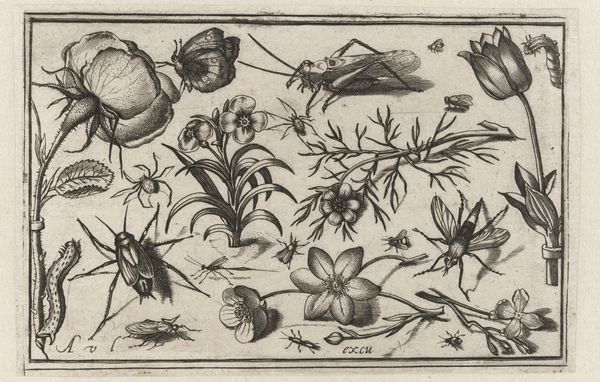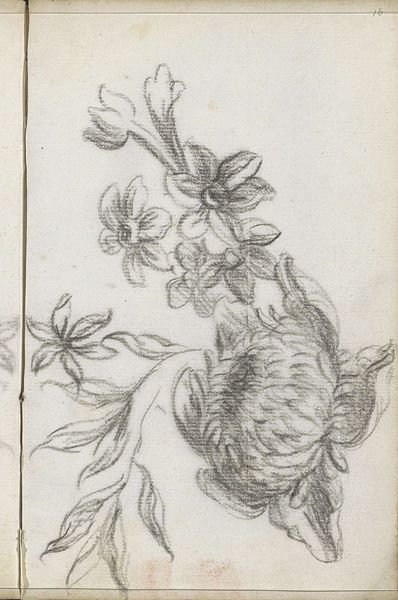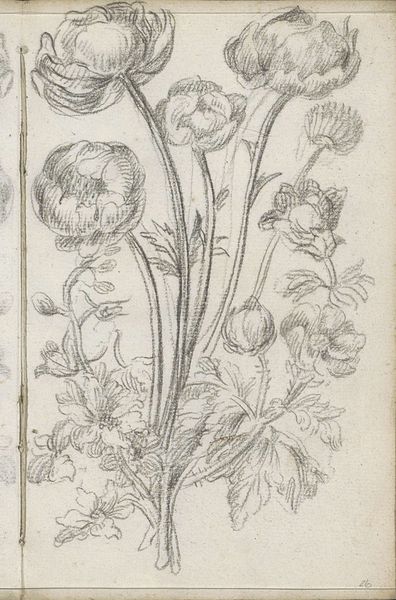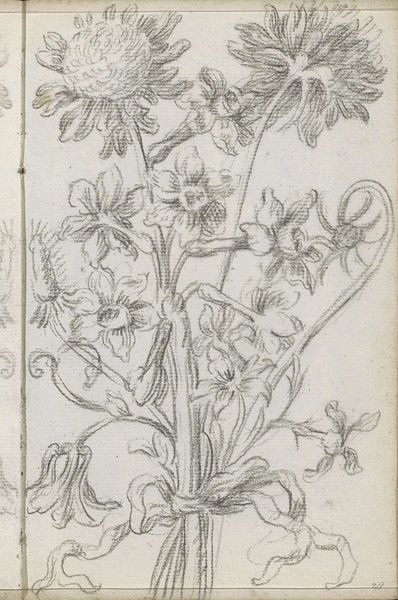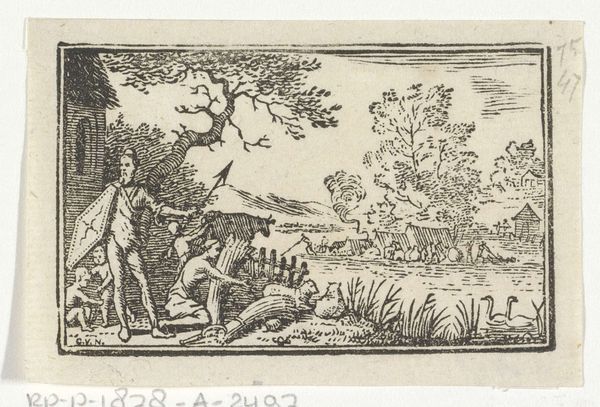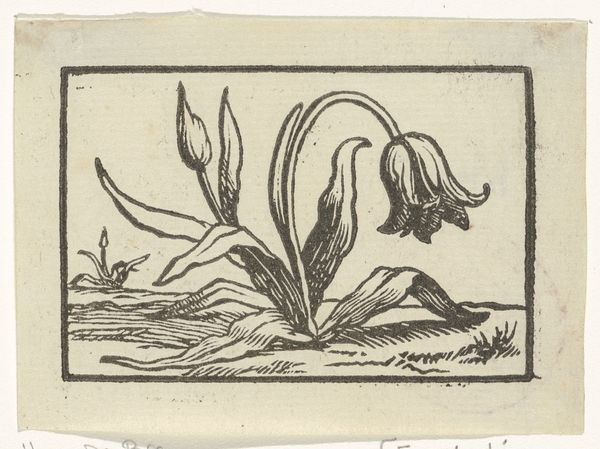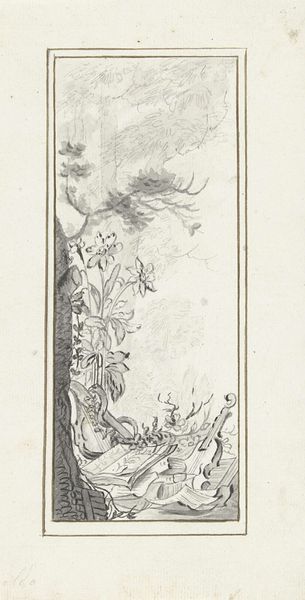
drawing, ink, woodcut
#
drawing
#
pen drawing
#
dutch-golden-age
#
pen illustration
#
pen sketch
#
ink line art
#
personal sketchbook
#
ink
#
ink drawing experimentation
#
pen-ink sketch
#
woodcut
#
pen work
#
sketchbook drawing
#
sketchbook art
Dimensions: height 65 mm, width 82 mm
Copyright: Rijks Museum: Open Domain
Curator: Oh, there's something so enchanting about this woodcut! It’s titled “Hyacint en een tulp” which translates to "Hyacinth and a Tulip" by Isaac Vincentsz van der Vinne, created back in 1686. The details captured just using ink, incredible! Editor: Striking, isn’t it? A black and white floral scene that almost hums with quiet rebellion, like it's whispering secrets from the Dutch Golden Age about the craze that nearly bankrupted it: Tulip Mania. Curator: Exactly! These simple lines carry so much weight and, dare I say, beauty. It’s like a glimpse into a private sketchbook, a personal exploration of nature's form, you know? Just raw observation turned into something permanent. Editor: And a carefully constructed reality at that! Think of the power imbued in a single tulip. During that period in Dutch history, they were valued commodities, symbols of wealth, power and fleeting beauty that capitalism transforms and commodifies, reflecting our entanglement with the natural world. Curator: I love that reading. It’s easy to get lost in the technique here, the stark contrast of light and shadow. But yes, those bulbs meant everything at that moment, everyone was hoping to cash in, make their fortune! Editor: It's an illustration of power relations disguised as simple beauty. Who got to own these images? Who got to own the flowers themselves? How were those systems maintained? Van der Vinne gives us access to this cultural anxiety by reminding us about ephemerality through simple ink lines and a brief visual statement. Curator: So, for the viewer standing here now, what does that conversation between nature and societal pressures spark? I feel like I’m transported to that period. It ignites an incredible curiosity and takes us away from just observation and analysis and into lived experience. Editor: I agree that that’s where this piece shines - we can read this artwork not only as an image but also as a social document. It's an exercise in visualizing the commodification and stratification brought forth by new structures, ones that still impact society today. It’s still relevant to how we frame our relationship to commodities! Curator: Well said. What seemed at first to be an innocent snapshot of botanical interests of the artist and his time can reveal more significant concerns regarding the status quo of that era. Editor: Right, and in our current moment, as we confront capitalism and ecological crises, revisiting this seemingly quaint image brings the echoes of that historic tulip bubble and forces us to examine the values we impose on both beauty and worth.
Comments
No comments
Be the first to comment and join the conversation on the ultimate creative platform.
